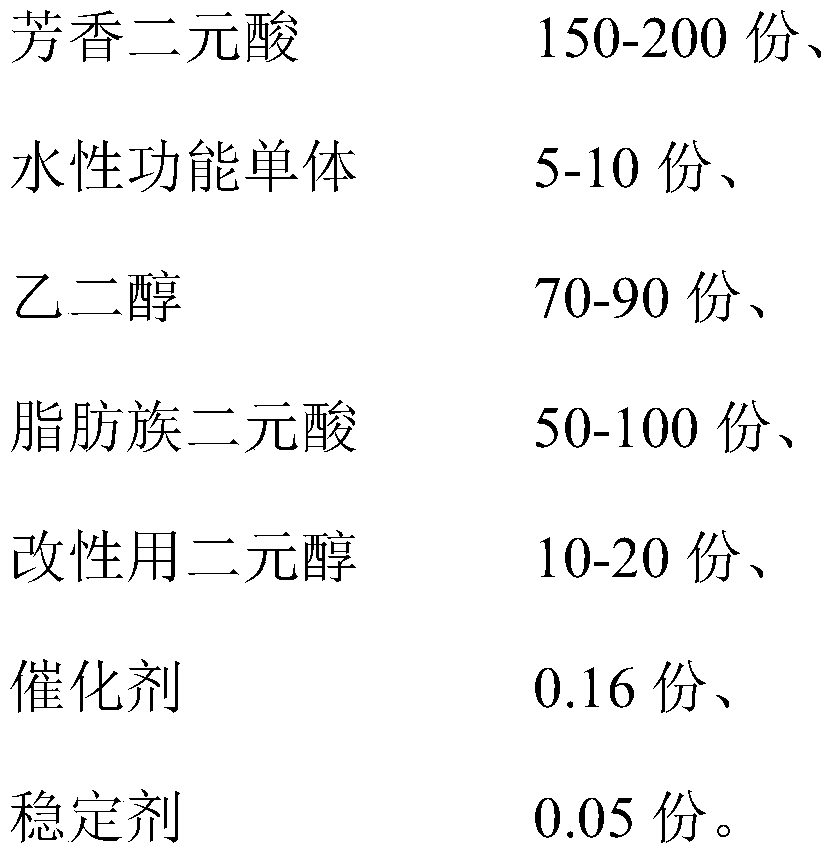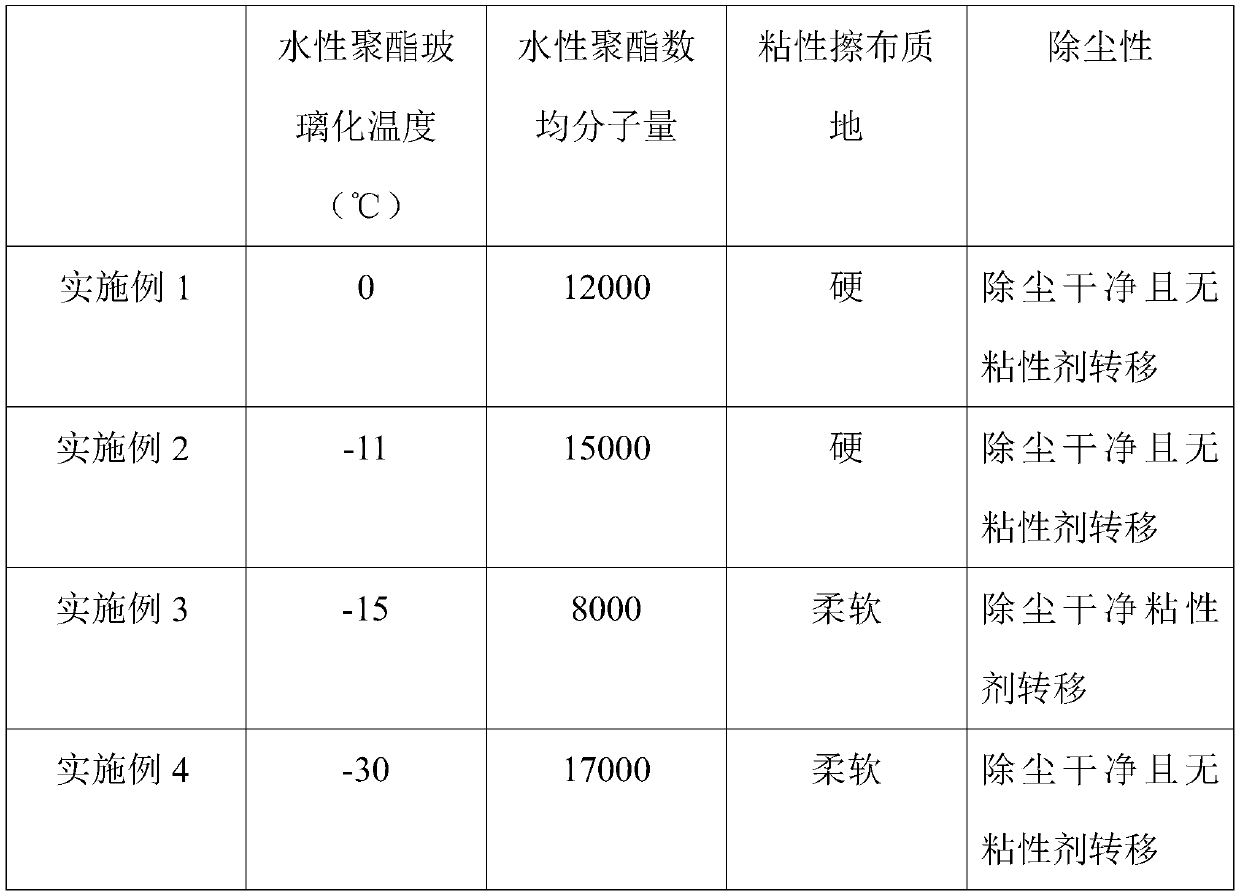Environment-friendly dedusting viscous wiping rag and preparation method thereof
A sticky and environmentally friendly technology, applied in the field of cleaning cloth, can solve the problems of environmental and operator injury, non-compliance with the development requirements of the green environmental protection era, human injury and other problems
- Summary
- Abstract
- Description
- Claims
- Application Information
AI Technical Summary
Problems solved by technology
Method used
Image
Examples
Embodiment 1
[0021] Weighing:
[0022] Aromatic dibasic acid: 200g terephthalic acid,
[0023] Water-based functional monomer: 10g sodium isophthalic acid-5-sulfonate,
[0024] Ethylene glycol 90g,
[0025] Aliphatic dibasic acid: adipic acid 50g,
[0026] Dihydric alcohol for modification: neopentyl glycol 10g,
[0027] Catalyst: ethylene glycol antimony 0.16g,
[0028] Stabilizer: 0.05 g of triphenyl phosphite.
[0029] Raw materials except the catalyst and stabilizer are added to a 1L polyester reactor at one time, and the esterification reaction is carried out at 300KPa and 240°C. After the esterification effluent reaches 90% of the theoretical value, the catalyst and stabilizer are added to the reactor. Then it was slowly pumped to a high vacuum, polycondensed under vacuum for 2 hours at 270° C., stopped the reaction, discharged, and cooled to obtain a low vitrification water-soluble polyester.
[0030] Heat to dissolve the low-vitrification water-soluble polyester in water, the...
Embodiment 2
[0032] Weighing:
[0033] Aromatic dibasic acid: 150g terephthalic acid, 50g isophthalic acid,
[0034] Water-based functional monomer: 5g of 2-sodium sulfonate terephthalic acid,
[0035] Ethylene glycol 70g,
[0036] Aliphatic dibasic acid: adipic acid 100g,
[0037] Modification dibasic alcohol: neopentyl glycol 20g,
[0038] Catalyst: tetrabutyl titanate 0.16g,
[0039] Stabilizer: 0.05 g of trimethyl phosphate.
[0040] Raw materials except the catalyst and stabilizer are added to a 1L polyester reactor at one time, and the esterification reaction is carried out at 300KPa and 240°C. After the esterification effluent reaches 90% of the theoretical value, the catalyst and stabilizer are added to the reactor. Then it was slowly pumped to a high vacuum, polycondensed under vacuum for 2 hours at 270° C., stopped the reaction, discharged, and cooled to obtain a low vitrification water-soluble polyester.
[0041] Heat to dissolve the low-vitrification water-soluble polyest...
Embodiment 3
[0043] Weighing:
[0044] Aromatic dibasic acid: 190g terephthalic acid,
[0045] Water-based functional monomer: 10g sodium isophthalic acid-5-sulfonate,
[0046] Ethylene glycol 80g,
[0047] Aliphatic dibasic acid: sebacic acid 100g,
[0048] Diol for modification: 10g of 2-methylpropanediol,
[0049] Catalyst: C-94 0.16g,
[0050] Stabilizer: antioxidant 1010 0.05g.
[0051] Raw materials except the catalyst and stabilizer are added to a 1L polyester reactor at one time, and the esterification reaction is carried out at 300KPa and 240°C. After the esterification effluent reaches 90% of the theoretical value, the catalyst and stabilizer are added to the reactor. Then it was slowly pumped to a high vacuum, polycondensed under vacuum for 2 hours at 270° C., stopped the reaction, discharged, and cooled to obtain a low vitrification water-soluble polyester.
[0052] Heat to dissolve the low-vitrification water-soluble polyester in water, then immerse the non-woven fabric ...
PUM
 Login to View More
Login to View More Abstract
Description
Claims
Application Information
 Login to View More
Login to View More - R&D
- Intellectual Property
- Life Sciences
- Materials
- Tech Scout
- Unparalleled Data Quality
- Higher Quality Content
- 60% Fewer Hallucinations
Browse by: Latest US Patents, China's latest patents, Technical Efficacy Thesaurus, Application Domain, Technology Topic, Popular Technical Reports.
© 2025 PatSnap. All rights reserved.Legal|Privacy policy|Modern Slavery Act Transparency Statement|Sitemap|About US| Contact US: help@patsnap.com



